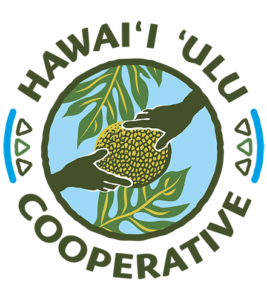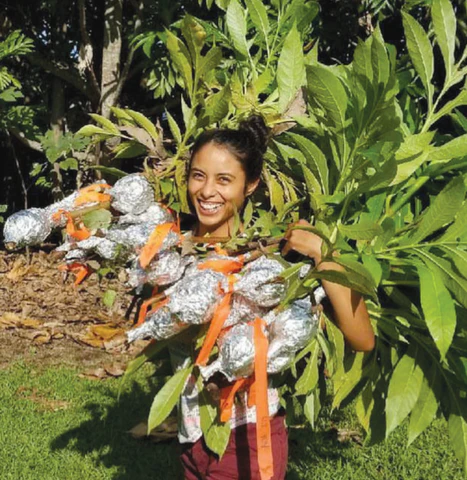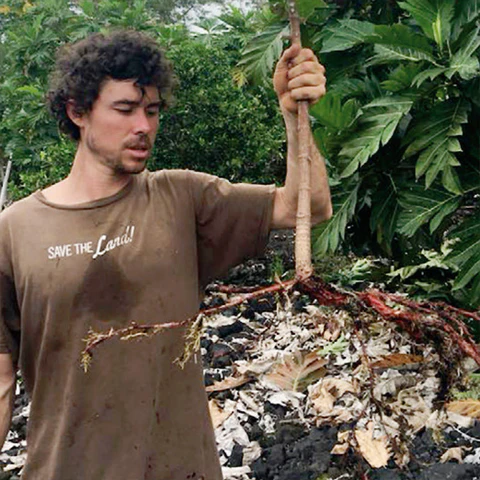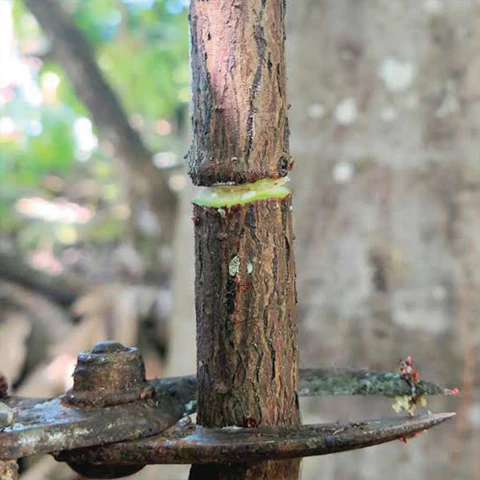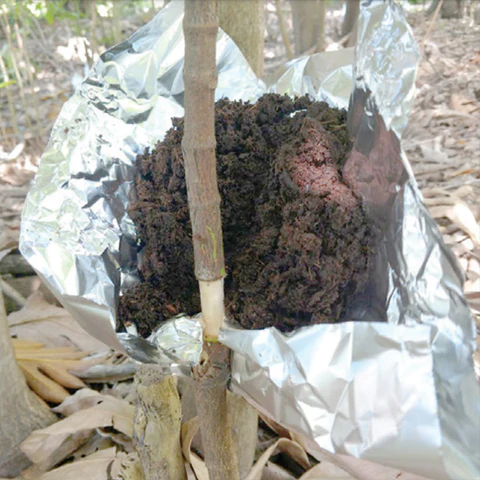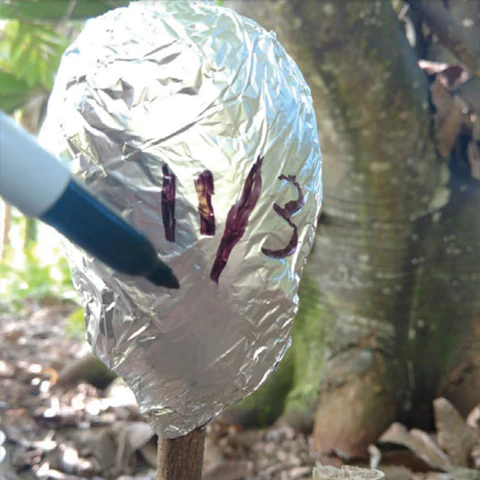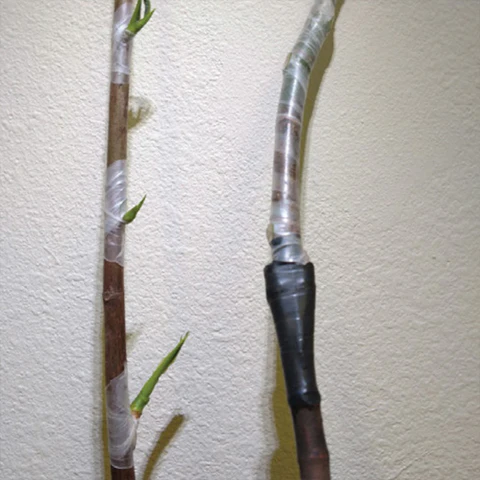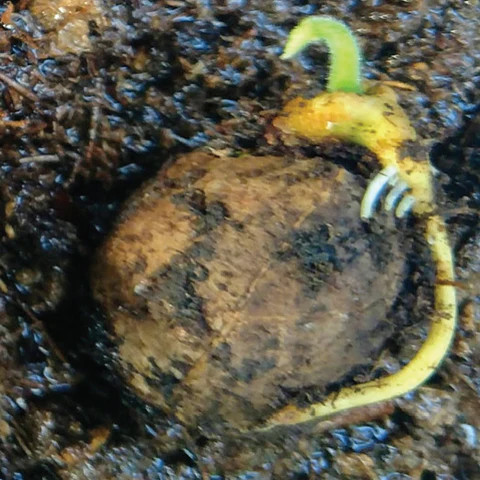‘Ulu Propagation Techniques
Strength in numbers: Propagation Techniques
For backyard & commercial growers alike, if you are curious about the methods and viability of different propagation methods for breadfruit trees – look no further! This comparative guide details information on 7 types of ‘ulu propagation techniques and how they best can be used by producers, from small scale individual farmers to large commercial growers.
Download the guide (PDF) to learn about propagation techniques for your farm!
Root sucker transplant
Overview: Find shoot growing from root, sever root on either side of shoot, transplant into pot with soil
Pros: Simple, low tech, free
Cons: Only one tree at a time, damages mother tree, may have low survival rate (relatively inefficient)
Recommended for: Backyard grower
Root Cuttings
Overview: Gather large section of root ~¾ to 1 inch wide, cut into section 3-4 inches long, pot in soil and keep moist.
Pros: Simple, low tech, free, can make several trees
Cons: Damages mother tree, can be prone to infection and disease because of large wound.
Adventitious Shoot Cuttings
Overview: Encourage shoots from branch or root, take cutting at ~18” high and root in humid conditions
Pros: Relatively low tech, can make high number of cuttings relatively quickly
Cons: Need high humidity infrastructure – either via grow box or misting system
Recommended for: Moderate to large scale farmer
Air layering
step 1: girdle the bark of small shoot. About 3/4″ to 1″ section.
step 2: remove bark to expose cambium layer.
step 3: use clean moist growing media to wrap the cut area with aluminum foil or dark plastic into a ball.
Write the date to keep track of when the air layer was made. Periodically check that the foil is intact and the growing media is not dry.
In 3 months the there will be roots growing in the medium. Separate the air layer from the shoot and transplant into the ground or into a large sized pot.
Overview: Girdle bark of small (~¾ to 1 inch) shoot, simulate underground conditions with moist medium for 3 months or until rooted
Pros: Self propagating supply of shoots, no damage to tree, makes use of nuisance trees, produces larger starting tree.
Cons: High labor/time investment, supplies needed
Recommended for: Backyard grower, Small scale commercial farmer
Grafting
Overview: Using root stock from seeds such as breadnut or jackfruit, sever shoot and attach cutting of breadfruit
Pros: Can enhance tree by using superior root stock, can be done at a large scale relatively quickly
Cons: Need skill set, if done poorly tree can be prone to infection; cannot use root stock for vegetative propagation later on.
Recommended for: Small to moderate scale commercial farmer
Tissue culture
Overview: Grow clonal plantlets from plant tissue cells in sterile media using growth hormones
Pros: Phytosanitary for international transit, produces large volume of plantlets in small area, supports germplasm conservation.
Cons: High-tech, usually requires laboratory, high volume & profitability entry barriers
Recommended for: Commercial propagator
Seed
Overview: Sexual propagation; many breadfruit varieties are seedless, some have occasional seeds.
Pros: Supports genetic diversity, hybrid crosses, breeding and selection for specific traits like fruit quality, dwarf stature and salt tolerance
Cons: Seedlings may not match parent variety and be slow to mature; questionable pollen source adds to the uncertainty
Recommended for: Backyard grower, Commercial farmer, Breeding program
Glossary of Propagation Terminology
Scion material: Growing tips of plants used in grafting to propagate known varieties.
Bud material: Newly emerging leaf buds used in grafting.
Rootstock: Plant root & stems for attaching graft material.
Graft: Variety propagation by attaching living branches to growing rootstock.
Asexual / vegetative: Propagation by growing plant material, not seeds.
Sexual: Propagation by seeds with genetic recombination from pollination.
Root: Plant material that absorbs water & nutrients, doesn’t photosynthesize, not gree, usually found in the ground.
Apical: Growing upward toward light source.
Adventitious shoot: Plant buds or stems not at growing branch tips.
Clone: Genetically identical plant material for consistent variety performance.
Cambium: Layer of plant cells inside bark of branches and trunk used to transport water and nutrients in sap.
Node: Swollen ring around plant stem or branch where leaves or buds emerge.
Breadfruit grows well in diversified agroforestry settings, where the planting design can incorporate techniques such as alley cropping, ground covers, windbreaks, and in row canopy plantings to provide shade for young ‘ulu trees.
Download the guide (PDF) to learn about propagation techniques for your farm!
Produced by Hawai‘i ‘Ulu Cooperative, Hawaii Tropical Fruit Growers Association and UH CTAHR with support from Big Island Resource Conservation & Development Council and County of Hawai‘i Department of Research and Development
